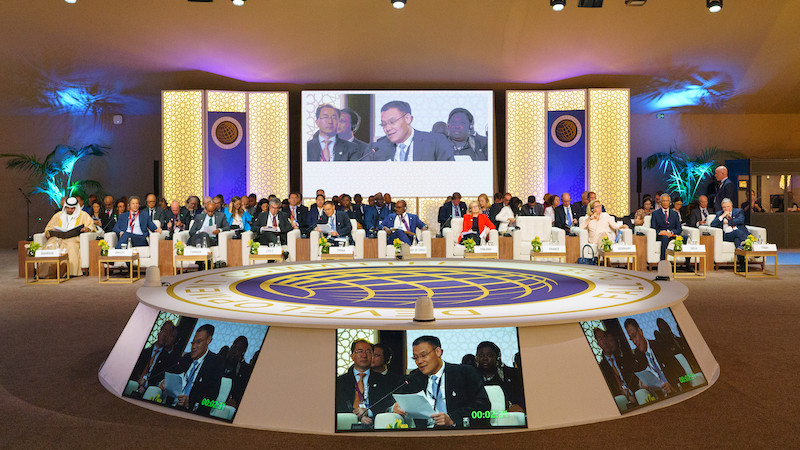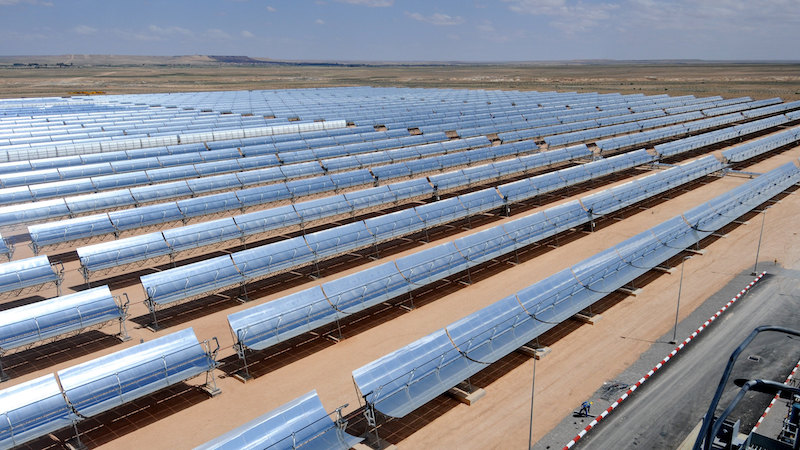While technical tweaks should make the World Bank’s capital go further, their impact depends on shareholders injecting fresh funds
The World Bank has officially expanded its mission to include climate change, while pushing ahead with reforms that could unlock additional funding and cheaper loans for green projects.
In his first major speech since taking office, President Ajay Banga said a set of measures to stretch its balance sheet could allow the bank to increase lending by up to $15.7 billion a year.
The extra funding would support the implementation of the bank’s new vision statement approved by its governing body on Thursday.
The historical objective to “end poverty” should now be achieved “on a livable planet”. The new mission will give the lender the formal mandate to tackle a whole range of global challenges, among which climate change is seen as the most urgent one.
Banga said this will widen the aperture through which the bank looks at its task in the future. “If you can’t breathe and cannot drink clean water, there is little point in eradicating poverty,” he added.
Year-long reforms
Announced at the lender’s annual meetings in Marrakech, Morocco, the changes come a year after a group of its biggest shareholders, led by the United States and Germany, called for its fundamental shake-up to deliver more climate finance.
The overhaul quickly picked up pace. Former chief David Malpass resigned early, after sparking an outcry with climate sceptic comments, and was replaced by Banga, a former Mastercard CEO, who promised far-reaching reforms.
Banga is seeking to create a “better and bigger” bank capable of plugging a few more of the huge gaps in the provision of climate finance to developing countries.
But a lack of appetite to inject fresh funds into its coffers directed the focus on financial tweaks to make the existing capital go further. The reforms mainly concern the International Bank for Reconstruction and Development (IBRD), the lending arm for middle-income countries.
Accounting tweaks
The first concrete step came in April when the bank lowered its equity-to-loan ratio from 20% to 19%, freeing up $4 billion a year.
The lender is also creating a programme of guarantees backed by shareholders, which would step in to cover potential losses if borrowers cannot repay their loans. The measure would offload some of the risk currently shouldered by the World Bank to its donors, allowing the bank to channel those reserves into more new lending.
Another option under development is the launch of a hybrid capital mechanism, which allows shareholders to inject new funds by investing in special bonds issued by the World Bank.
US Treasury secretary Janet Yellen at the World Bank annual meetings in Marrakech. Photo: World Bank / Franz Mahr
Taken together, this suite of tools could boost the bank’s lending capacity by $157 billion over the next decade, Banga said on Friday.
He added that the plans have been “met with enthusiasm and generosity”. But, crucially, their potential will only be realised if shareholders fork out the money.
Saudi Arabia, Russia urge World Bank to keep funding fossil fuels
The US government favours the guarantees plan and wants Congress to approve $2.1 billion in new funding that could unlock $25 billion in new loans. Germany has become the first country to pledge 305 million euros ($321 million) of “hybrid capital”.
Cheaper energy loans
Another element of Banga’s blueprint is the extension to middle-income countries of the cheap loans that are currently exclusively offered to low-income ones. The concessional resources currently available “are insufficient to deliver on the new vision and mission”, a paper outlining the bank’s reforms said.
The rollout of clean energy in high-emitting countries is one of the primary areas the lender would be targeting with these measures.
“We’re investigating if we can reduce interest rates to incentivize exiting from coal as part of energy transitions,” said Banga, “and find ways to encourage a renewable energy transition by increasing concessional finance in the mix.”
Danny Scull, an analyst at E3G, said this is a welcome step as incentivising countries like India and Brazil to take out cheaper loans for climate action will benefit the whole world.
Amid all the optimism, the World Bank chief added words of caution on how far his organisation can go without external help.
An influential panel of experts commissioned by the G20 said in July that development banks need to triple their lending levels by 2030 if they want to make a serious dent in the trillions of dollars of climate finance needed by developing countries.
Appeals for more capital
“The World Bank is merely an instrument that reflects the ambition of our shareholders,” said Banga, “the progress we aspire to achieve requires our resources and capital to be commensurate with o
Read More



